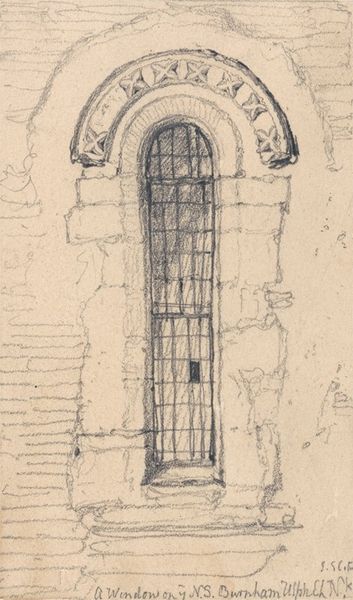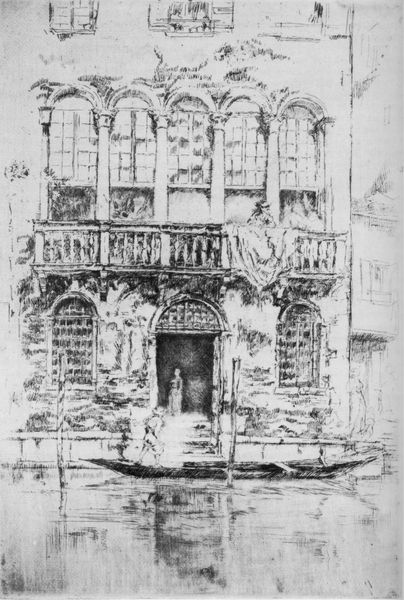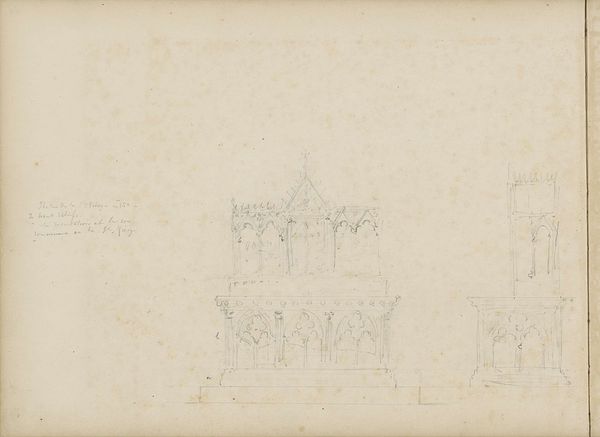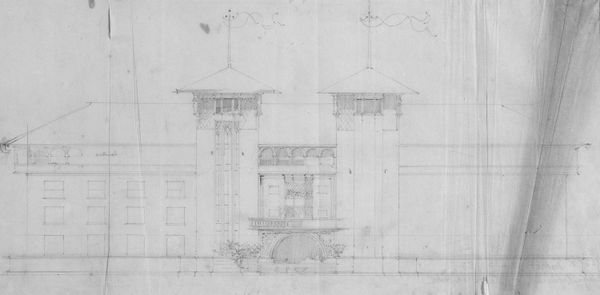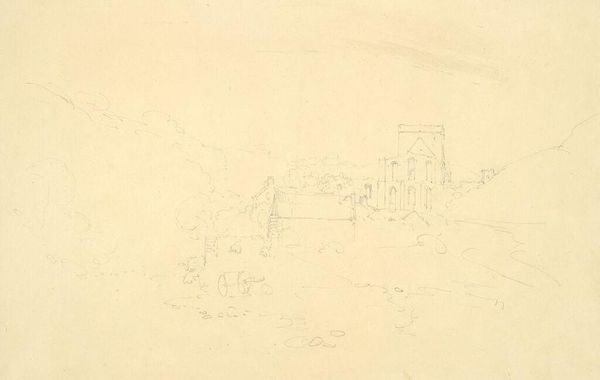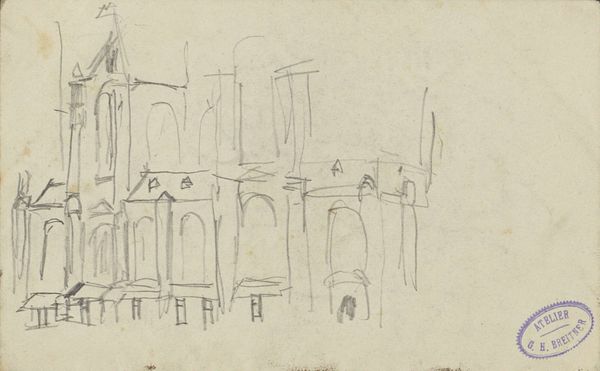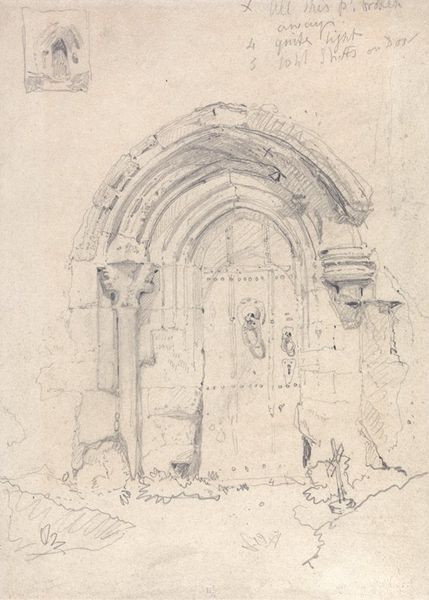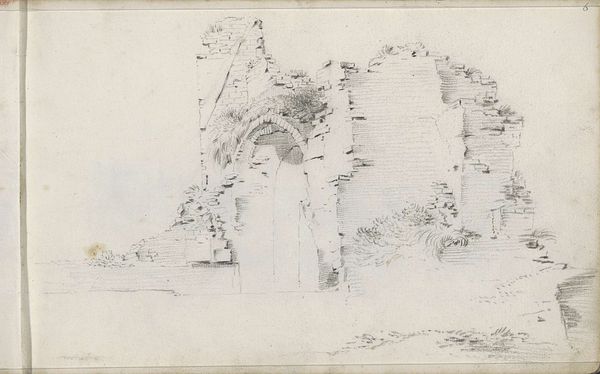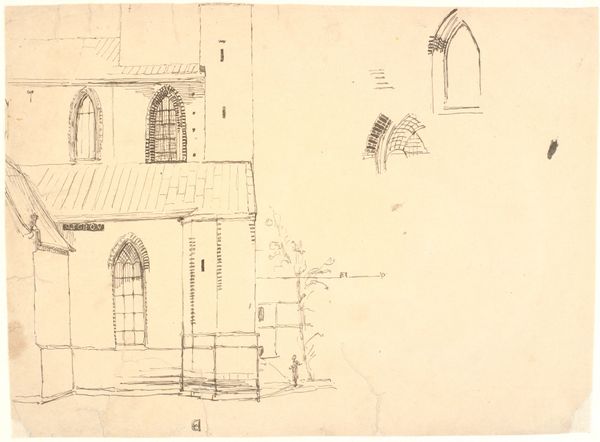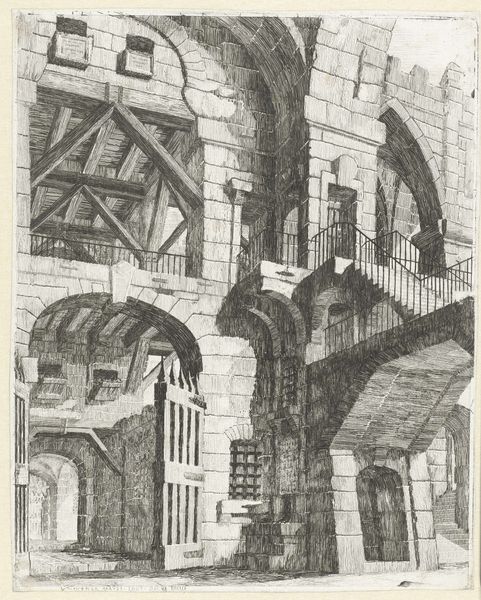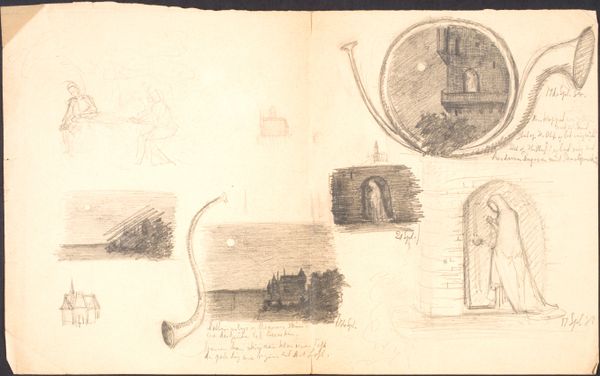
The choir of the Groote Kerk in Bergen op Zoon 1520
0:00
0:00
albrechtdurer
Städelsches Kunstinstitut und Städtische Galerie (Städel), Frankfurt am Main, Germany
architecture
#
architectural sketch
#
amateur sketch
#
sketch
#
pencil sketch
#
sketched
#
incomplete sketchy
#
charcoal drawing
#
detailed observational sketch
#
sketch
#
arch
#
rough sketch
#
architecture
#
initial sketch
Copyright: Public domain
Editor: So, this is "The choir of the Groote Kerk in Bergen op Zoon" by Albrecht Dürer, from 1520. It’s a detailed pencil sketch, and there’s something haunting about its incompleteness, almost as if it's a memory fading. What do you see in this piece, beyond just a rendering of architecture? Curator: I see Dürer grappling with the complexities of representation in a rapidly changing world, marked by the rise of humanist thought and religious upheaval. This sketch isn't just documentation; it’s a negotiation. The Protestant Reformation was just beginning, questioning established hierarchies, much like Dürer is questioning the very act of portraying such an imposing symbol of power as a church. Editor: A negotiation? How so? Curator: Well, consider the unfinished nature of the sketch. Is it a deliberate choice reflecting the uncertainties of the time? The lines are tentative, the perspective, though present, isn’t entirely resolved. To me, this hesitation speaks volumes about the shifting ground beneath religious and artistic authority. Does it feel as though Durer’s hand is conflicted, as if there's both reverence and critical assessment present? Editor: That's fascinating; I hadn’t considered it in that light. I just saw it as an unfinished piece. So you’re saying the Reformation isn't just a backdrop, but actively shaping Dürer's artistic choices? Curator: Precisely. The sketch becomes a site where the old world of religious certainty and the new world of questioning and reformation collide. Even the medium – a humble pencil sketch – challenges the grandeur typically associated with religious depictions at the time. Editor: That completely changes how I view this sketch. I now see it as an insightful look at the religious tensions during the beginning of the Reformation. Curator: Exactly! It highlights how sociopolitical circumstances influenced both his subject matter, as well as the decisions made in the execution of the work. I see more than the church; I see how one’s identity affects every artwork, and every person’s viewpoint about an artwork, too.
Comments
No comments
Be the first to comment and join the conversation on the ultimate creative platform.
